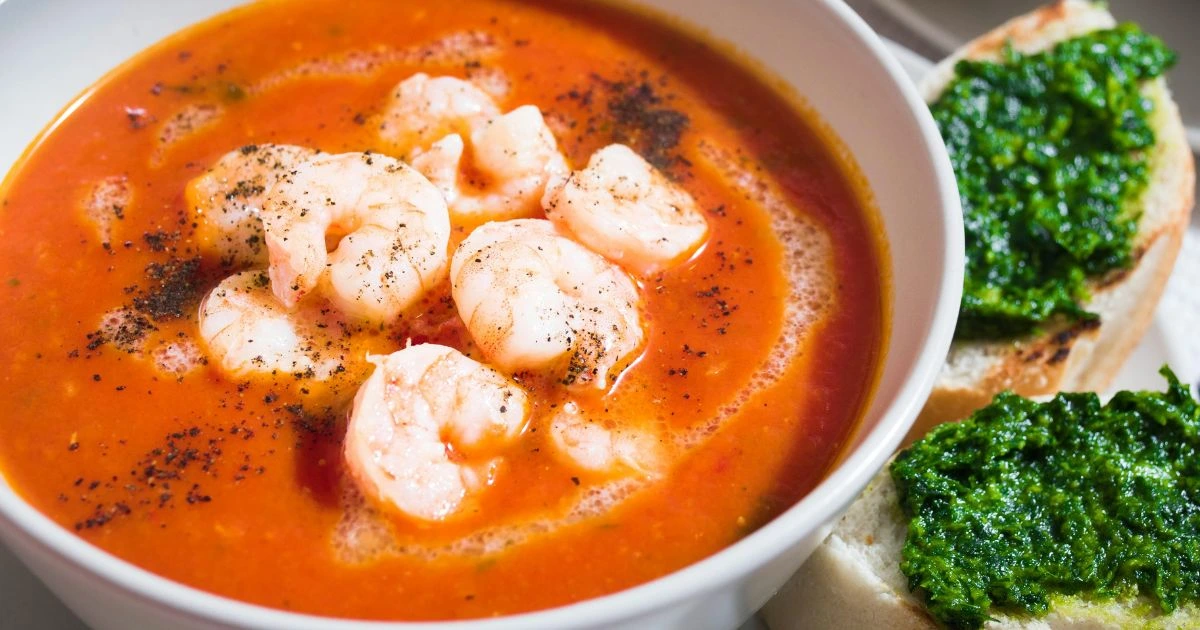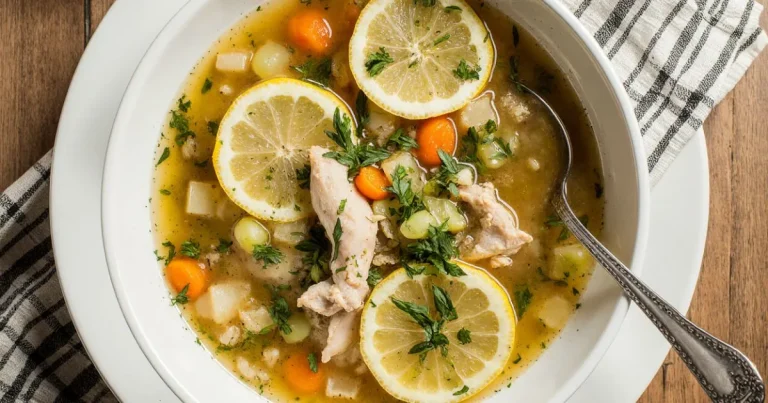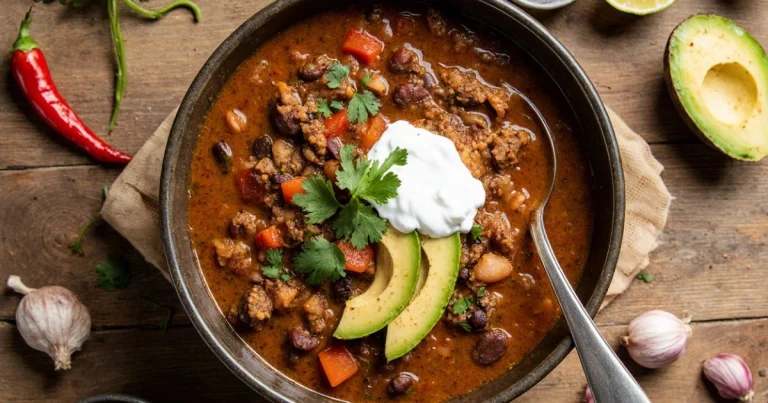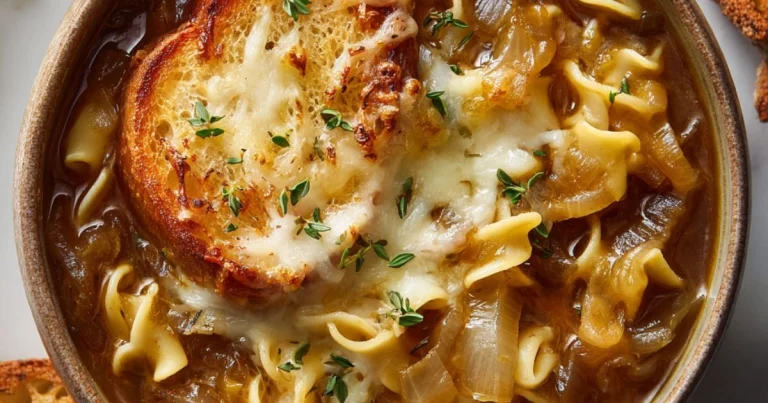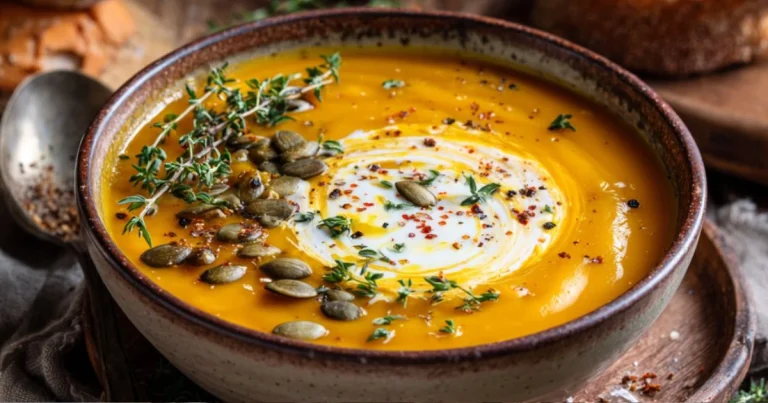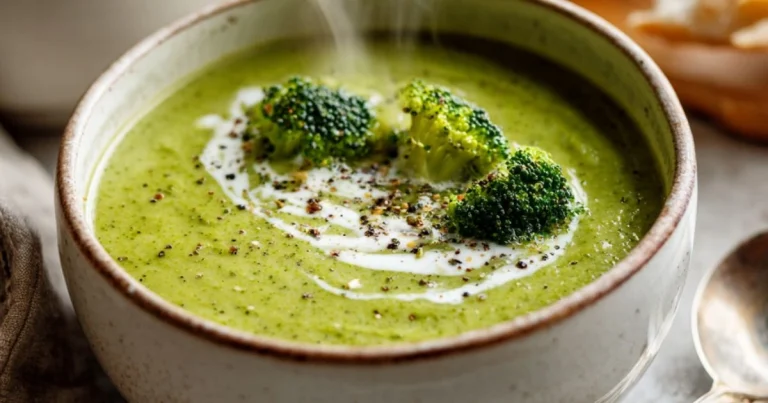Healthy Shrimp Soup
This dish, typical in many coastal cultures, combines lean proteins, fresh vegetables, and comforting flavors that don’t compromise your health or your palate.
Besides being a versatile dish, it’s ideal for those following a low-fat diet or seeking foods rich in omega-3 and low in calories. Thanks to natural ingredients and cooking techniques without frying, you can enjoy this soup guilt-free.
According to the USDA database, shrimp are low in calories, rich in protein, and provide essential nutrients such as selenium, vitamin B12, and iodine. And if you’re concerned about the source of your seafood, the Seafood Watch organization recommends sustainable options that protect the marine ecosystem.
Nutritional Benefits of Shrimp
Shrimp stand out for their abundance of essential nutrients, making them an ideal choice for maintaining a balanced diet. First and foremost, they are high in high-quality protein, essential for tissue repair, muscle development, and maintaining a lasting feeling of fullness—making them perfect for weight control diets.
Despite their low calorie content (approximately 85 calories per 100 grams cooked), shrimp are nutritionally dense. They are low in fat and virtually free of carbohydrates. Additionally, they provide omega-3 fatty acids, especially EPA and DHA, known for their role in cardiovascular and brain health.
They also supply a large amount of vitamin B12, essential for proper nervous system function and red blood cell formation, as well as selenium, a powerful antioxidant that helps prevent cellular damage. Other minerals present include zinc, phosphorus, iron, and iodine.
Although shrimp contain cholesterol, recent studies suggest this type of cholesterol does not negatively affect blood cholesterol levels in most people—especially when included in a diet low in saturated fats. In summary, shrimp are a tasty, versatile, and highly nutritious food.
Key Ingredients for a Healthy Shrimp Soup
The key to preparing a healthy shrimp soup is choosing natural, low-fat, and nutrient-rich ingredients. These not only add flavor but also contribute to the nutritional balance of the dish.
1. Fresh or frozen shrimp without additives
Choose clean shrimp, without preservatives or breading, to ensure a lean, low-calorie, and mineral-rich protein base (such as selenium and iodine).
2. Homemade low-sodium broth
Homemade vegetable or seafood broth allows you to control the salt content and avoid additives like MSG. You can also use low-sodium commercial options—just check the label.
3. Fresh vegetables
- Carrot, rich in beta-carotene, adds natural sweetness.
- Celery and red bell pepper provide crunch and essential vitamins like C and K.
- Onion and garlic are flavor staples with anti-inflammatory properties.
4. Healthy fats
Use extra virgin olive oil or avocado oil instead of butter to provide heart-healthy monounsaturated fats.
5. Spices and aromatic herbs
Replace salt with spices like turmeric, oregano, bay leaf, and black pepper, which enhance flavor without adding sodium.
6. Light finishing touches
Add lemon or lime juice at the end of cooking to brighten and balance the soup’s flavor. Fresh cilantro can also be added for an herbal note.
These ingredients strike the perfect balance between flavor and nutrition, making this soup an ideal option for maintaining a healthy diet.
Step-by-Step Recipe: Healthy Shrimp Soup
This healthy shrimp soup recipe is simple, quick, and packed with flavor and nutrients. Perfect for a light lunch or comforting dinner, it combines lean protein, fresh vegetables, and natural spices that enhance flavor without the need for excess fats.
Ingredients (4 servings):
- 500 g peeled and cleaned shrimp
- 1 liter homemade or low-sodium vegetable broth
- 1 carrot, thinly sliced
- 1 red bell pepper, cut into strips
- 1 stalk of celery, chopped
- ½ white onion, diced
- 2 garlic cloves, minced
- 2 tablespoons extra virgin olive oil
- ½ teaspoon turmeric
- 1 bay leaf
- Juice of 1 lemon
- Sea salt and black pepper to taste
- Optional: chopped fresh cilantro for garnish
Instructions:
Finish and serve: Turn off the heat, stir in the lemon juice, and adjust seasoning if needed. Serve hot and garnish with chopped cilantro if desired.to.
Sauté aromatics: In a large pot, heat the olive oil over medium heat. Add the onion and garlic and sauté for 3 minutes until translucent.
Add vegetables: Stir in the carrot, celery, and bell pepper. Cook for 5 minutes, stirring occasionally to soften while keeping their vibrant color.
Pour in the broth and season: Add the hot broth along with turmeric, bay leaf, salt, and pepper. Bring to a boil, then reduce to medium heat and simmer for 15 minutes.
Add the shrimp: Add the shrimp and cook for 3–5 minutes, or until they turn pink and are fully cooked.
Finish and serve: Turn off the heat, stir in the lemon juice, and adjust seasoning if needed. Serve hot and garnish with chopped cilantro if desired.
Recipe Variations
One of the main strengths of healthy shrimp soup is its remarkable versatility. You can easily adapt it to different tastes, cultures, or dietary needs without losing its nutritional qualities. Below are several ways to personalize this recipe:
1. Latin Style with Coconut and Turmeric
For a tropical touch, add light coconut milk in place of part of the broth. Incorporate turmeric and a pinch of chili or dried guajillo pepper to bring a warm, spiced flavor. This version is ideal if you enjoy more exotic and creamy flavors, similar to coconut shrimp.
2. Asian Style with Ginger and Lemongrass
Draw inspiration from Eastern flavors by using freshly grated ginger, lemongrass, and a splash of low-sodium soy sauce. You can also include vegetables like bok choy or shiitake mushrooms. This version is refreshing, aromatic, and light.
3. Vegan Version with Marinated Tofu
If you prefer to avoid seafood, substitute the shrimp with firm tofu marinated in soy sauce and nori seaweed for a marine-like flavor. Increase the amount of vegetables and use a rich vegetable broth to maintain the depth of flavor.
4. Chilled Soup for Hot Days
Prepare the soup following the usual method, then let it cool completely before storing. Blend part of the contents for a creamy texture and refrigerate before serving. Add a few drops of fresh lemon juice when serving to enhance the flavor.
These variations allow you to adapt the recipe to different seasons, diets, or cultures without giving up its healthy profile.
If you enjoy dishes with a fruity and spicy twist, you’ll love this shrimp in mango and chipotle sauce alternative—a perfect inspiration for a unique soup version.
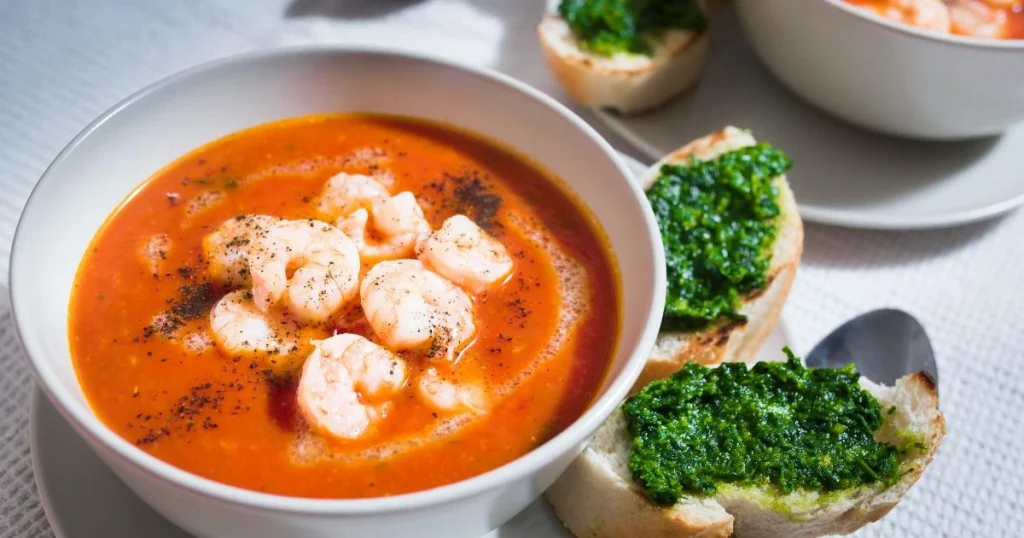
Tips to Make It Even Healthier
Although healthy shrimp soup is already a nutritious option, you can enhance it even further with small adjustments that boost its nutritional value without sacrificing flavor.
1. Use sustainable and fresh shrimp
Choose responsibly sourced or certified sustainable shrimp. Avoid pre-cooked or breaded ones, which often contain sodium and unnecessary additives.
2. Control the sodium
Make your own salt-free vegetable broth or use low-sodium versions. Limit salt by adding more aromatic herbs like bay leaf, thyme, or cilantro.
3. Incorporate leafy greens
Add spinach, Swiss chard, or kale at the end of cooking to enrich the soup with fiber, iron, and antioxidants.
4. Avoid frying
Sauté using just one tablespoon of olive oil, or use a bit of water if you prefer an even lighter version.
5. Watch portion sizes
Serve with a light side and avoid fatty add-ons like cream or white bread.
Healthy Side Dishes
Complement your healthy shrimp soup with these light side options:
- Green leafy salad with lemon vinaigrette
- Steamed brown rice
- Rye toast without butter
- Cucumber and ginger water or green tea
Frequently Asked Questions (FAQ)
How many calories are in shrimp soup?
An average serving contains between 150 and 250 calories, depending on the ingredients and whether oil or milk is used. You can check this healthy soup guide to compare options.
Does shrimp soup help with weight loss?
Yes. Thanks to its low calorie content, high protein value, and satisfying effect, it’s ideal for weight loss plans.
What ingredients should I avoid to keep it healthy?
Avoid:
- Dairy creams or butter
- Excess salt
- Pre-cooked shrimp with additives
Can shrimp soup be frozen?
Yes. Let it cool completely, store it in airtight containers, and freeze for up to 2 months. When reheating, do so slowly to preserve texture.
What type of shrimp is healthiest?
Choose wild-caught shrimp or those from responsible farms, and avoid shrimp with artificial preservatives or raised with antibiotics.
Conclusion
Healthy shrimp soup is more than just a tasty dish—it’s a powerful combination of flavor, nutrition, and wellness. Adaptable to various cooking styles, this recipe can be a great ally for those aiming to eat better without sacrificing taste.
And if you’d like to explore more popular recipes with shrimp as the main protein, try this shrimp Alfredo pasta, perfect for a healthy yet indulgent dinner.
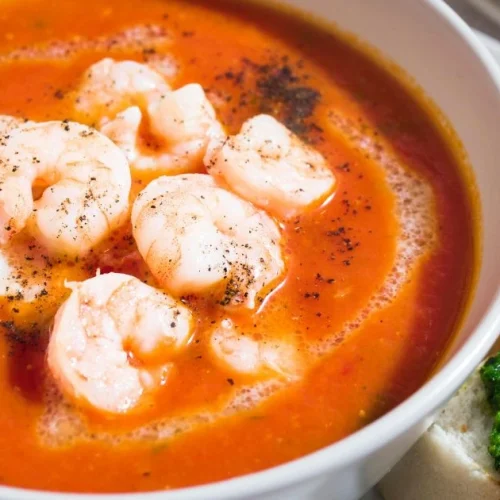
Healthy Shrimp Soup
Ingredients
- 1 tbsp olive oil
- 1 small onion, diced
- 2 garlic cloves, minced
- 1 celery stalk, sliced
- 1 medium carrot, diced
- 1 zucchini, chopped
- 400 g raw shrimp, peeled and deveined
- 4 cups low-sodium vegetable or seafood broth
- 1 cup diced tomatoes (canned or fresh)
- 1 tsp paprika or smoked paprika
- ½ tsp chili flakes (optional)
- Salt and pepper to taste
- Fresh parsley or cilantro for garnish
- Juice of ½ lemon (optional)
Instructions
- Sauté vegetables: In a pot, heat olive oil over medium heat. Add onion, garlic, celery, and carrot. Cook for 4–5 minutes.
- Add broth and simmer: Add zucchini, broth, tomatoes, paprika, chili flakes (if using), salt, and pepper. Simmer for 10–12 minutes.
- Cook shrimp: Add shrimp and cook for 3–4 minutes, or until pink and opaque.
- Finish and serve: Add lemon juice and garnish with herbs. Serve hot.
Notes
Notes
- You can substitute zucchini with spinach or kale.
- Add quinoa or brown rice for a heartier version.
- Use pre-cooked shrimp for faster prep, but add them at the end to avoid overcooking.

